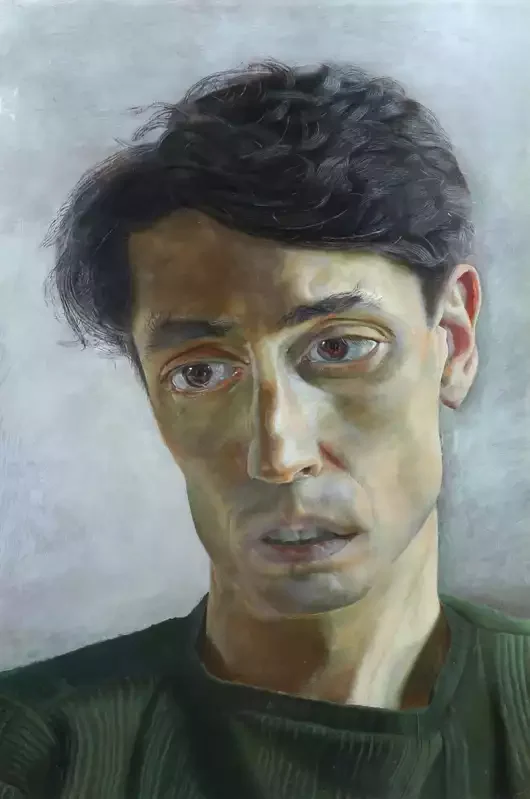Once again, in light of your recent portrait work, here’s someone you should have on your radar…Lucian Freud.
Born in Berlin, he came to England with his family in 1933 (he only recently died in 2011). famously private, he mostly communicated by phone and often changed his number so folks couldn’t reach him. He rejected the idea that an artist’s life mattered to his art. And yes, he was the Sigmund Freud’s grandson. He kept a meticulous painting schedule treating it almost like a standard, 9-5 job. He began with a morning session with one model, then an afternoon break, then an evening session with a different model, then dinner and off to bed. he did this 7 days a week, 365 days a year. He often cited this time spent as one of the reasons he made his best work “as an old man.”
He was intensely interested flat, crispy, outlined drawings early in his career. At some point, his interest in that type of expression was exhausted and and he moved on to what critics now hail as an ushering in of a new type of portraiture. His paintings were fleshy and visceral, often revealing something of the subject. he even switched to hog hair brushes during this time so the paint could be applied more like “skin and bones.” he almost always insisted on cleaning his brushes in between colors so that he could avoid the mother color taking over. he wanted “color to remain constantly variable” and also insisted that one could only paint successfully standing up. “one has to engage with one’s work.” He combined the the realism of Rembrandt and the mushy, brushstroke-laden work of Soutine. His subjects seemed to vacillate between frail and melancholy, carnal and yet unsexy, sentimental and clinical. Given his family background and his notorious namesake, his work is also regarded as some of the most physiological of his generation. But that’s a whole other can of worms we can get into later.
For now, take note of the way he handles light and shadow using his brushstrokes to define those planes, the space between his brushstrokes, the weight of those strokes and the attention paid to detail in only specific spots while also letting sections fall apart and almost dissolve…this is what he is known for. Standing in front of one of these, if you squeeze your eyes a bit, it feels as if the subject is right in front of you. But not in a photographic way, in a creepy, like…”I can feel the presence of another person in this room” kinda way. Radical work by any measure.


































